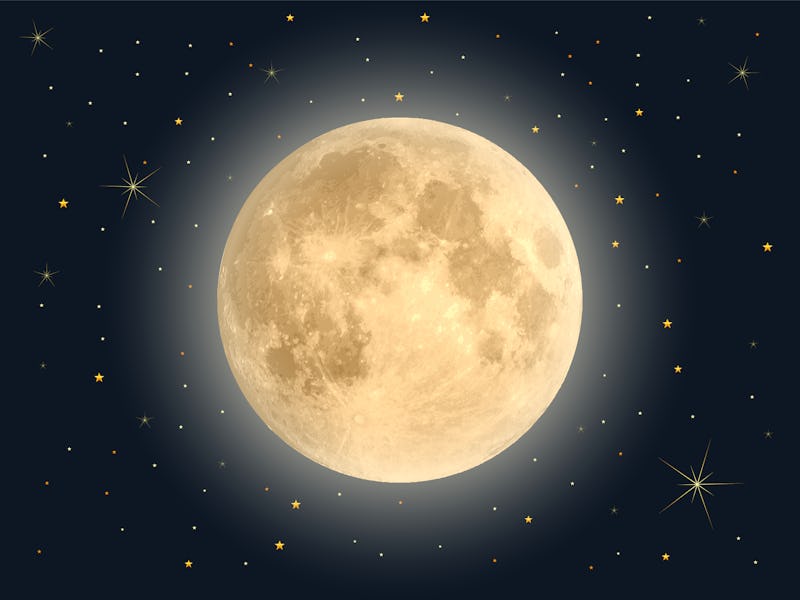You need to see the Wolf Moon shine in the sky this week
It's the second Full Moon of the winter season.

Over the course of its trip around the Earth, the Moon moves through different phases, each marked by a different degree of luminosity — and a unique nickname, a cheeky nod and wink to the time of year these phases are taking place.
In that spirit, on January 28, our night skies will be lit up by the Wolf Moon — the second Full Moon of the winter season.
You don't want to miss this sight of our lunar companion glistening up above. Here's everything you need to know about when the Wolf Moon will light up the night skies, including the date, time, and ideal location for viewing this celestial sight.
Every four weeks, the Moon embarks on a brand new orbit around the Earth — an occasion marked by a New Moon. The New Moon is barely visible in the skies, but our natural satellite's visibility increases as the cycle continues.
At the beginning of its cycle, the Moon is on the same side of the Earth as the Sun, with its dark side facing our planet.
The Moon goes through eight different phases, each varying in brightness and size.
As it makes its orbit around the Earth, which takes 27 days, 7 hours, and 43 minutes, the Moon goes through eight different phases, each varying in brightness, visibility, and size. When it reaches its apex — a Full Moon — the Moon appears at its largest and brightest.
A Full Moon takes place when the Earth is wedged between the Sun and the Moon at exactly opposite ends, with the side of the Moon facing the Earth becoming fully illuminated by the Sun’s beaming light.
The first time you see a Full Moon during a new year is when you’re allowed to howl at it.
The Wolf Moon is the first Full Moon of a calendar year, but generally it is considered the second Full Moon of the winter season.
This celestial event got its nickname, so says the Farmer's Almanac, from certain Native American tribes because it coincides with the time of year when wolves could allegedly be heard howling the most. The reason why, according to the Almanac, was to do with the scarcity of food during the harsh winter season.
How to see 2021's Wolf Moon: Dates, times, and location
The Wolf Moon will rise in the evening sky on January 28 at 2:16 p.m. Eastern, and will appear at its brightest from dusk till dawn.
The Moon will continue to climb upwards in the evening sky until it appears at its highest point at midnight, according to EarthSky.
The Moon will remain bright for two nights, before it gradually begins fading into darkness once more, starting a brand new cycle.
The Moon's new orbit will begin on February 11, and the next Full Moon will be on February 27, which is also known as the Snow Moon.